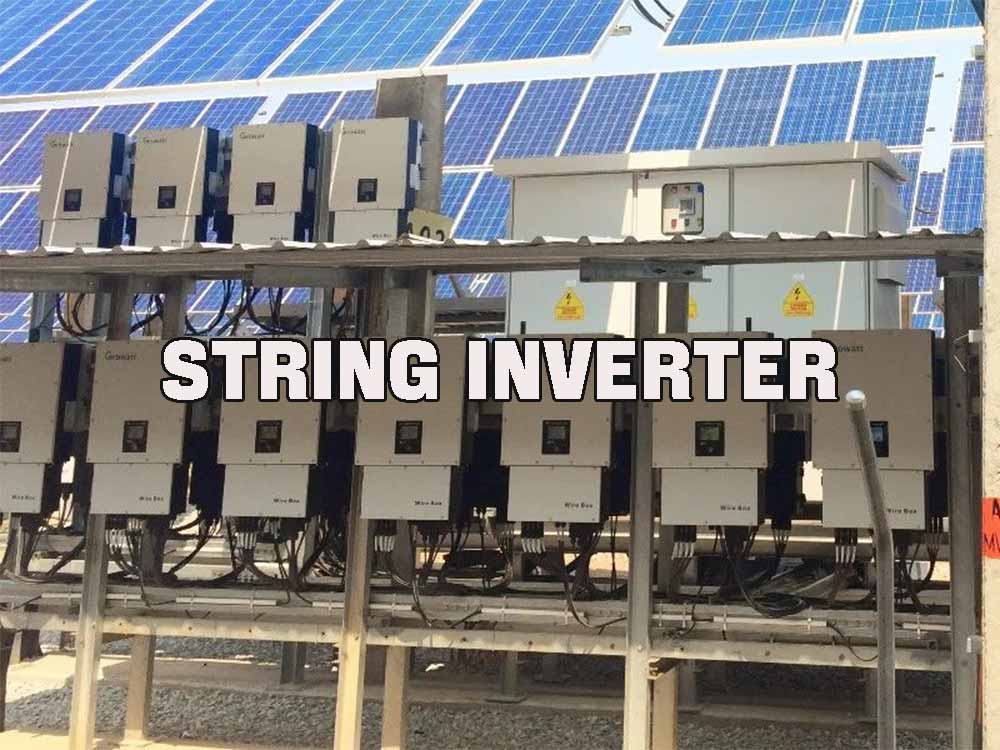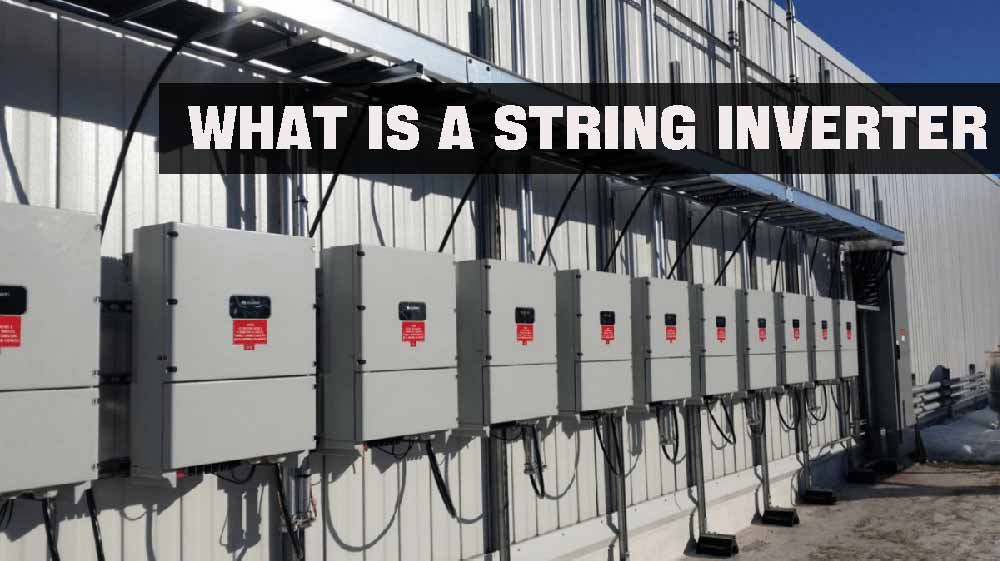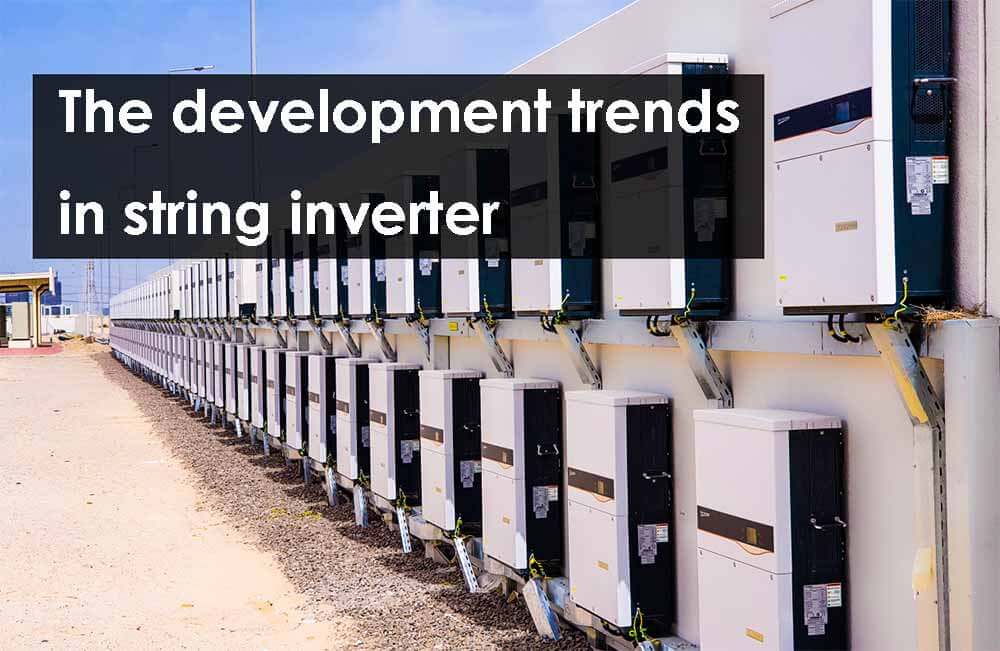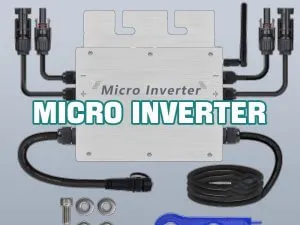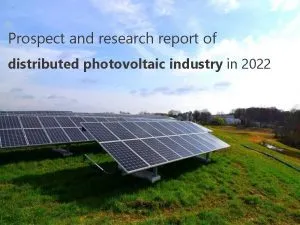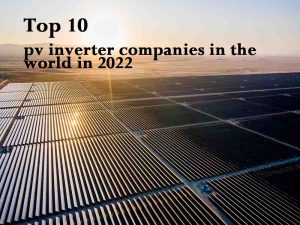Understanding of string inverter - composition, features and development trends

What is string inverter
String inverter is based on the concept of modularity and adopts multi-channel Mppt tracking technology. Several groups (generally 1-4 groups) of PV strings are individually tracked to the maximum power peak value, and then merged into the AC grid after inversion. The power of this type of inverter is relatively small, and the single power is generally below 100KW.
With technological progress and the increasingly prominent demand for cost reduction and efficiency enhancement, the power of string inverter gradually increased, and products with higher power such as 136KW and 175KW have appeared.
The string inverter has a large number of MPPTs, and the advantage is that it is not affected by module differences and shading between strings, and at the same time reduces the mismatch between the optimal operating point of the photovoltaic modules and the inverter, thereby increasing the power generation.
These technical advantages not only reduce the cost of the system, but also increase the reliability of the system, and have the advantages of high tracking accuracy, flexible component configuration, easy installation, and quick operation and maintenance, but at the same time, it has the disadvantages of slightly poor power generation quality and high cost.
It is mainly used in small-scale household distributed power generation, small and medium-sized industrial and commercial rooftop power stations, etc., and can also be applied in centralized photovoltaic power generation systems.
Main components and functions of string inverter
The products of string inverter generally include main board, arc fault detection board, DSP board, inverter power board, boost boost power board and EMI board.
- Motherboard: The main function of the main board is to collect the internal signals of the inverter, provide internal power supply, and control the connection with the power grid.
- Arc Fault Detection Board: The main function of the arc fault detection board is to detect and identify the arc occurring in the DC input line of the inverter.
- DSP board: The main function of the DSP board is to provide the logic control of the inverter’s internal signal processing and various power and protection functions.
- Inverter power board: The main function of the inverter power board is to convert DC power into AC power.
- Boost boost power board: The main function of Boost boost power board is to track the maximum output power of photovoltaic modules and provide a constant DC voltage for the inverter circuit.
- EMI board: The main function of the EMI board is to suppress the electromagnetic interference of the inverter to the external power grid and the environment, and to prevent external lightning strikes, surges and other interference or damage to the inverter.
Advantages and disadvantages of string inverter
Advantages of string inverter
(1) It is not affected by module differences between strings and shadows, and at the same time reduces the mismatch between the optimal operating point of the photovoltaic cell module and the inverter, and maximizes the power generation;
(2) The MPPT voltage range is wide, and the component configuration is more flexible; in cloudy and rainy days, in areas with much fog, the power generation time is long;
(3) Small size, small footprint, no need for a dedicated computer room, and flexible installation;
(4) Low self-consumption power and small fault impact.
Disadvantages of string inverter
(1) The electrical clearance of power devices is small, which is not suitable for high-altitude areas; there are many components, integrated together, and the stability is slightly poor;
(2) Outdoor installation, wind and sun exposure can easily lead to aging of the shell and heat sink;
(3) The number of inverters is large, the total failure rate will increase, and the system monitoring is difficult;
(4) Without the design of isolation transformer, the electrical safety is slightly worse, and it is not suitable for the negative grounding system of the thin-film module.
The development trend of string inverter
1.The stand-alone power of the string inverter is getting bigger and bigger
The single capacity of string inverter is usually less than 100kW. In the early stage of industrial development, string inverter with lower power is usually the mainstream choice. However, with the development of power modules and other technologies, market-leading companies have begun to develop and launch string inverter with higher stand-alone power.
When the power of a single machine is continuously increasing, the string inverter can not only play its advantages, such as large MPPT capacity, wide range of maximum power tracking voltage, flexible component configuration, long power generation time, and can be directly installed outdoors;
It can also make up for the lack of relative central inverters such as low single-unit power to a certain extent. Now many large-scale ground power stations and other centralized photovoltaic power generation systems have begun to use string inverter. In the future, the single-unit power of string inverter in industrial and commercial rooftop and ground photovoltaic power plants will also increase.
2.Diversified intelligent applications and expansion
With the continuous upgrading of technology, the inverter not only undertakes the role of converting direct current into alternating current, but also shoulders more intelligent application requirements such as data acquisition and manual interaction.
The photovoltaic inverter can detect, record and upload various fault information such as excessive grid voltage and low grid voltage in the grid and photovoltaic system, the grid frequency is too high, the grid frequency is too low, the grid voltage is unbalanced, the DC voltage exceeds the standard, the photovoltaic grid-connected inverter is overloaded, photovoltaic grid-connected inverter over-temperature operation, DSP fault, communication failure, insulation fault, leakage protection, etc., DC arcing protection and voltage distortion rate exceeding protection, etc., all can be recorded by the PV inverter and uploaded to user-monitored devices such as mobile phones and computers.
Because string inverter has been widely used in distributed photovoltaic power generation systems, including household energy storage systems, industrial and commercial rooftops and photovoltaic poverty alleviation and other small and medium power generation projects, users have high demand for intelligent power generation systems, and inverters with greater data collection, management and monitoring functions are bound to be a major development trend.
The photovoltaic inverter battery can also provide more diversified functional interfaces such as battery energy storage interfaces for the photovoltaic power generation system. The energy storage system can be used to store the excess power generated by the photovoltaic system, and the energy storage battery can be consumed in the event of a power outage or peak electricity price.
The grid-connected inverter with photovoltaic energy storage function can automatically and optimally configure electric energy according to the time period between the peak period of power consumption and the trough period of power consumption in the grid. During peak hours of electricity consumption, the inverter switches between photovoltaic power generation or battery power supply mode to provide electricity to users;
During the low power consumption period, the inverter switches the charging method of the mains or the mains to the energy storage battery, so as to realize the functions of shaving peaks and filling valleys and reducing the burden on the grid, so as to realize the optimal configuration of electric energy and improve the user’s income.

